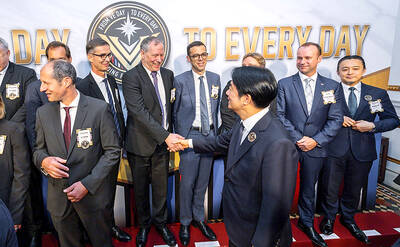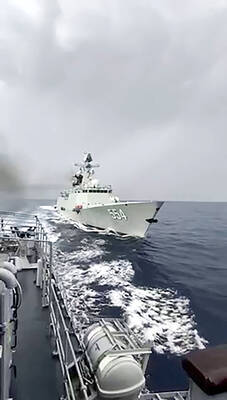When Philip Mould began as a professional art dealer 22 years ago, the buying and selling of high-end artwork was confined to a small group of well-versed art historians who scoured the globe in search of masterpieces.
But the timeless world of art has changed in the age of the Internet and technology. Once limited to examining 15 to 20 works per day, Mould and his staff can now judge the value of between 50 and 100 works of art per day.
“There are more possibilities, more discoveries, but there is also more competition. There is a new generation that likes the adrenaline rush and buys indiscriminately,” Mould said.
Mould’s new book, The Art Detective, explores the once-shadowy but now widely accessible world of art dealing and restoration.
“Knowledge is more democratized now,” he said.
Mould once had to use low-quality photographs to judge a work of art being offered by a seller. Now he is able to closely examine every inch of a painting by using modern digital imagery.
“Photography has transformed the art world,” he said.
His book is subtitled Fakes, Frauds and Finds, and the Search for Lost Treasures.
Among the best of his stories: The discovery of a Rembrandt self-portrait.
Originally attributed to a follower of Rembrandt, the painting once was valued at between US$2,000 and US$4,000. Later, having been authenticated as a lost self-portrait, it sold at auction for US$5.2 million. It is now valued at an estimated US$40 million.
Mould, 50, is an expert on British portraiture and a presenter for the television series Antiques Roadshow, in which appraisers judge the value of antiques purchased across Britain. The show has been duplicated in several countries, including the US, Canada, Australia and Germany.
Mould says he is drawn to the art itself and to the excitement of the chase.
“The most exciting moment is when the painting is taken out to be improved and restored,” he said. “It’s the artistic equivalent of open-heart surgery. Sometimes I can’t even watch. Emotions are extreme, especially when you’ve paid for it yourself.”
Mould uses his expertise to expose fraud. British police have estimated that 50 percent of the art sold on eBay, for example, is fraudulent.
“There are more fakes now. A lot of fakes come from China, for example. But one can never recreate the effects of time. Even the smell is important,” Mould said. “It’s very exciting. Old-fashioned connoisseurship is greatly assisted by modern science.”

DEFENDING DEMOCRACY: Taiwan shares the same values as those that fought in WWII, and nations must unite to halt the expansion of a new authoritarian bloc, Lai said The government yesterday held a commemoration ceremony for Victory in Europe (V-E) Day, joining the rest of the world for the first time to mark the anniversary of the end of World War II in Europe. Taiwan honoring V-E Day signifies “our growing connections with the international community,” President William Lai (賴清德) said at a reception in Taipei on the 80th anniversary of V-E Day. One of the major lessons of World War II is that “authoritarianism and aggression lead only to slaughter, tragedy and greater inequality,” Lai said. Even more importantly, the war also taught people that “those who cherish peace cannot

STEADFAST FRIEND: The bills encourage increased Taiwan-US engagement and address China’s distortion of UN Resolution 2758 to isolate Taiwan internationally The Presidential Office yesterday thanked the US House of Representatives for unanimously passing two Taiwan-related bills highlighting its solid support for Taiwan’s democracy and global participation, and for deepening bilateral relations. One of the bills, the Taiwan Assurance Implementation Act, requires the US Department of State to periodically review its guidelines for engagement with Taiwan, and report to the US Congress on the guidelines and plans to lift self-imposed limitations on US-Taiwan engagement. The other bill is the Taiwan International Solidarity Act, which clarifies that UN Resolution 2758 does not address the issue of the representation of Taiwan or its people in

Taiwanese Olympic badminton men’s doubles gold medalist Wang Chi-lin (王齊麟) and his new partner, Chiu Hsiang-chieh (邱相榤), clinched the men’s doubles title at the Yonex Taipei Open yesterday, becoming the second Taiwanese team to win a title in the tournament. Ranked 19th in the world, the Taiwanese duo defeated Kang Min-hyuk and Ki Dong-ju of South Korea 21-18, 21-15 in a pulsating 43-minute final to clinch their first doubles title after teaming up last year. Wang, the men’s doubles gold medalist at the 2020 and 2024 Olympics, partnered with Chiu in August last year after the retirement of his teammate Lee Yang

The Philippines yesterday criticized a “high-risk” maneuver by a Chinese vessel near the disputed Scarborough Shoal (Huangyan Island, 黃岩島) in a rare incident involving warships from the two navies. The Scarborough Shoal — a triangular chain of reefs and rocks in the contested South China Sea — has been a flash point between the countries since China seized it from the Philippines in 2012. Taiwan also claims the shoal. Monday’s encounter took place approximately 11.8 nautical miles (22km) southeast” of the Scarborough Shoal, the Philippine military said, during ongoing US-Philippine military exercises that Beijing has criticized as destabilizing. “The Chinese frigate BN 554 was